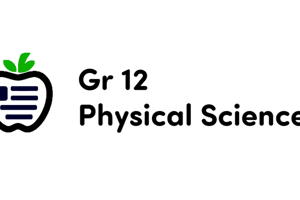Podcast
Questions and Answers
Match the following molecules with their chemical classifications based on carbon content:
Match the following molecules with their chemical classifications based on carbon content:
Water (H2O) = Inorganic Sugar (C6H12O6) = Organic Oxygen (O2) = Inorganic Salt (NaCl) = Inorganic
Match the following hydrocarbon structures with their names:
Match the following hydrocarbon structures with their names:
C2H6 = Alkane C2H4 = Alkene C2H2 = Alkyne CH4 = Alkane
Match the following chemical descriptions with the correct functional groups:
Match the following chemical descriptions with the correct functional groups:
Molecules containing –OH group = Hydroxyl Molecules containing –C=O group = Carbonyl Molecules containing –COOH group = Carboxyl Molecules containing –NH2 group = Amino Group
Match the organic molecules with their molecular formula:
Match the organic molecules with their molecular formula:
Match the following carbon valence concepts to their definitions:
Match the following carbon valence concepts to their definitions:
Match the type of bonds carbon can form with their description:
Match the type of bonds carbon can form with their description:
Match the following molecules with their bond types:
Match the following molecules with their bond types:
Match the descriptions with their corresponding terms:
Match the descriptions with their corresponding terms:
Flashcards
Organic Chemistry
Organic Chemistry
The study of compounds containing carbon-hydrogen bonds. It's crucial for understanding the building blocks of life!
Carbon
Carbon
An atom that forms the backbone of all biological molecules. It can form four bonds, allowing for the creation of diverse structures.
Organic Compound
Organic Compound
Any compound that contains carbon. They are the building blocks of life and form the basis of organic chemistry.
Hydrocarbons
Hydrocarbons
Signup and view all the flashcards
Structural Formula
Structural Formula
Signup and view all the flashcards
Functional Group
Functional Group
Signup and view all the flashcards
Hydroxyl Group
Hydroxyl Group
Signup and view all the flashcards
Line Diagram
Line Diagram
Signup and view all the flashcards
Study Notes
Organic Chemistry Basics
- Organic chemistry is the study of compounds containing carbon-hydrogen bonds.
- Carbon is present in all biological molecules.
- All compounds containing carbon are called "organic compounds."
Functional Groups
- Functional groups are groups of atoms in an organic molecule that participate in chemical reactions.
- Hydroxyl: polar; found in alcohols and sugars (-OH)
- Carbonyl: polar;
- aldehyde (at the end of the carbon skeleton)
- ketone (within the carbon chain)
- Carboxyl: polar, acidic; donates a proton (H+), found in amino acids, fatty acids, some vitamins (-COOH)
- Amino: polar, basic; accepts a proton (H+), found in proteins, nucleic acids (-NH₂)
- Sulfhydryl: slightly polar; found in proteins (-SH)
- Phosphate: polar, negatively charged; found in nucleic acids and energy production (ATP) (-OPO₃²⁻)
Hydrocarbons
- Hydrocarbons are compounds made of only carbon and hydrogen.
- They are nonpolar molecules.
- Classified based on the number of bonds:
- Alkanes (single bonds)
- Alkenes (double bonds)
- Alkynes (triple bonds)
Representing Organic Molecules
- Molecular Formulas: represent the number of atoms of each element in a molecule.
- Structural Formulas: show the arrangement of atoms in a molecule.
- Modified Structural Formulas: simplify structural formulas by omitting some hydrogen atoms.
- Line Diagrams (Skeletal Formulas): further simplify structural formulas by representing bonds as lines
Checking for Understanding (Examples)
- Organic Compounds (check page 4): Sugar (C₆H₁₂O₆), Cholesterol (C₂₇H₄₆O)
- Draw Structural Formulas (check page 9): Students need to draw formulas for various hydrocarbons based on their number of bonds (single, double, or triple).
Carbon
- Valence of 4
- Can react with many elements.
- forms single, double or triple bonds with other carbons atoms.
Carbon Dating
- Cosmic rays create neutrons.
- Neutrons react with nitrogen-14, forming carbon-14.
- Plants absorb carbon-14.
- Animals eat plants containing carbon-14.
- Carbon-14 decays to nitrogen-14 after an organism dies.
- This is used to determine the age (time-elapsed) in biological artifacts (bones, wood, etc.)
Studying That Suits You
Use AI to generate personalized quizzes and flashcards to suit your learning preferences.




